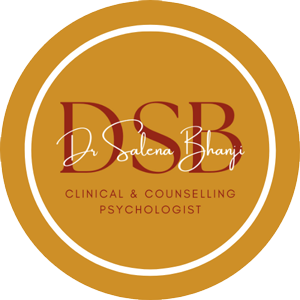The outcomes of therapy can look rather different to the other personal services that we’re used to investing in. For instance, we walk into a hair dresser and a couple of hours later, we walk out looking perceptibly more coiffured. Or if we have a stiff neck, we may see a massage therapist who will massage and stretch our neck muscles so that we can turn our heads with more ease and less pain. There wouldn’t be any embarrassment in stating openly that you have an appointment with a hair dresser or a massage therapist, and you may even have family or friends compliment you on the outcome or ask you about your experience.
Whilst there’s no underestimating the therapeutic value of a good haircut or neck massage, it’s interesting to reflect on how the differences between these outcomes and those of seeing a psychologist, may shape our thinking and attitudes about therapy.
Firstly, the outcomes of therapy can take a number of appointments before you start to see a difference. The process of psychological change can be difficult and it’s not uncommon for people to experience discomfort or move backwards for a period of time before they start to experience positive changes in internal states. This uncertainty and effort can be difficult to reconcile.
Secondly, therapy affects us in a rather “internal” way; we can’t see the changes as they start occurring and neither can others. All this hive of activity is happening in our brains and bodies, but is rather imperceptible to the naked eye, at least initially…
Thirdly, is that despite extensive public campaigning to promote mental health as a necessary component of overall wellbeing, for some who may have had an ‘old school’ or ‘stiff upper lip’ type of upbringing, there still tends to exist a stigma attached to the idea of seeing a psychologist. Also for many there is a lingering concern about receiving judgement or sympathy that can hinder openness about therapy experiences.
And lastly, therapy still has somewhat of a reputation for being an outlet for self indulgence i.e. somewhere you go to “talk about yourself for an hour”. This belief can elicit feelings of guilt or selfishness for a person who is trying to invest in their wellbeing, particularly if they perceive other concrete areas of their lives (or family’s lives) where time or money should be spent.
These four factors may challenge some people’s willingness, openness or perseverance in therapy, however those who make the personal investment in therapy often start observing the following indicators that therapy is “working” for them:
- The distress begins to shift and/or you start to feel better. You may not always know why or how, but you do recognise that things feel better somehow
- You feel like you’re in the driver’s seat rather than being taken along for a ride. There’s a feeling of control over your actions and decisions and you start enjoying the experience rather than worry about it.
- You’ve developed new habits and communication styles, and you’re no longer blindly repeating the same patterns that used to be your default.
- People are starting to notice your changes- your mood, your behaviours and your ways of responding. They may not necessarily comment, however they start changing the way they respond to you.
- You feel nurtured and understood and know you will have a safe space to share your thoughts and emotions whenever you may need it.
- Your relationship with yourself starts to become healthier – more balanced, less critical. You feel empowered, optimistic and functional. There are new goals, hope and connection.
This isn’t to say that therapy makes life all rosy or that there aren’t challenges along the way, however when therapy is working, a person feels supported and confident knowing that a safe space is available to explore. Therapy ultimately works in different ways for different people. What’s important is that if you need it, you find a way of getting it!
